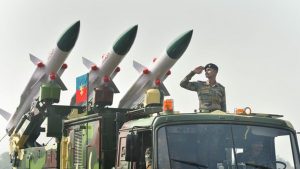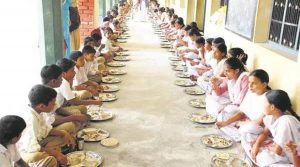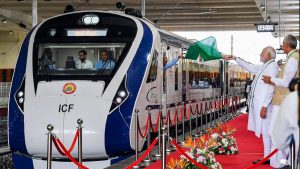Today Current Affairs:4th October 2022 for UPSC IAS exams, State PSC exams, SSC CGL, State SSC, RRB, Railways, Banking Exam & IBPS, etc
Table of Contents
Windfall Tax:

The government recently cut the windfall tax on domestically-produced crude oil to Rs 8,000 per tonne from Rs 10,500, and halved the levy on export of diesel to Rs 5 per litre.
- The taxes were introduced on July 1, as the Centre felt that elevated crude prices were allowing oil companies to make windfall profits, and that the exchequer must get a share of such gains.
- The reduction in tax rates follows the easing of crude oil prices in international markets.
- A windfall tax is a tax levied by governments against certain industries when economic conditions allow those industries to experience above-average profits.
- The idea is to target firms that were lucky enough to benefit from something they were not responsible for – in other words, a windfall.
- In other words, windfall tax is imposed on companies that have seen their profits extraordinarily not because of any clever investment decision or an increase in efficiency or innovation, but simply because of favourable market conditions.
YUVA 2.0:

Prime Minister’s Scheme for Mentoring Young Authors – YUVA 2.0 was launched recently.
- It is a Prime Minister’s scheme for mentoring young authors, and a programme to train young and budding authors below the age of 30 to promote reading, writing, and book culture in the country, and project India and Indian writings globally.
- The ministry of education (MoE) launched the YUVA 2.0 scheme in view of the significant impact of the first edition of the YUVA.
- The first edition witnessed a large-scale participation from young authors in 22 different Indian languages including English.
- It is in tune with the Prime Minister’s vision to encourage the youth to understand and appreciate India’s democracy.
- It will help to develop a stream of writers who can write on a spectrum of subjects to promote the Indian heritage, culture, and knowledge system.
- The National Book Trust, India, as the implementing agency under MoE will ensure the phase-wise execution of the scheme under well-defined stages of mentorship.
- The young authors will be trained by eminent authors and mentors from 1st March to 31st August 2023.
Tri-Services Missile/Rocket Command:

The central government is considering setting up of a tri-services missile/rocket command on the lines of the space and the cyber command as the first steps towards military theatre commands.
- The proposed missile command will be responsible for deployment of missile and rocket regiments against any hostile adversary and will be manned by commanders of the three services in rotation.
- This means that conventional missiles like BrahMos and Akash as well as Pinaka rockets will be placed under one command for rapid deployment against any adversary.
- The proposal to set up a missile command has been moved in the aftermath of the May 2020 East Ladakh stand-off with the PLA and the use of rockets and missiles in the Ukraine theatre by the Red Army.
- The missile command will be on similar lines as the tri-services cyber command and the space command as the future wars will hardly have any contact between troops unless used for capturing enemy territory.
Light Combat Helicopter:

The Indian Air Force (IAF) is set to induct its first batch of indigenously-developed Light Combat Helicopter (LCH) in a major boost to its combat prowess.
- The indigenous Light Combat Helicopter (LCH) is set to be formally inducted into the Indian Air Force (IAF) at the Jodhpur air base.
- It is the only attack helicopter in the world which can land and take off at an altitude of 5,000 meters with a considerable load of weapons and fuel, meeting the specific requirements laid out by the Indian Armed Forces.
- It has the maximum take-off weight of 5.8 tonnes, maximum speed of 268 kilometers per hour, range of 550 kilometers, endurance of over three hours and service ceiling — the maximum density altitude to which it can fly — of 6.5 kilometres.
- The helicopter uses radar-absorbing material to lower radar signature and has a significantly crash-proof structure and landing gear.
- A pressurised cabin offers protection from nuclear, biological and chemical (NBC) contingencies.
- The helicopter is equipped with a countermeasure dispensing system that protects it from enemy radars or infrared seekers of the enemy missiles.
- As far as weapons systems are concerned, a 20 mm turret gun, 70 mm rockets and air-to-air missile systems are onboard.
- LCH is powered by two French-origin Shakti engines manufactured by the HAL.
Midday Meal Scheme (PM Poshan Scheme):

The Ministry of Finance has approved a hike of 9.6 % cooking cost per child under the Mid-Day Meal Scheme.
- Since the last hike in early 2020, the cooking cost per child has been Rs 4.97 per child per day in primary classes (class I-V), and Rs 7.45 (class VI-VIII) in upper primary classes.
- After the hikes come into effect, the allocation at the primary level and upper primary levels will be Rs 5.45 and Rs 8.17, respectively.
- The Midday meal scheme (under the Ministry of Education) is a centrally sponsored scheme which was launched in 1995.
- It is the world’s largest school meal programme aimed to attain the goal of universalization of primary education.
- Provides cooked meals to every child within the age group of six to fourteen years studying in classes I to VIII who enrolls and attends the school.
- In 2021, it was renamed as ‘Pradhan Mantri Poshan Shakti Nirman’ scheme (PM Poshan Scheme) and it also covers students of balvatikas (children in the 3–5-year age group) from pre-primary classes.
- Objective:
- Address hunger and malnutrition, increase enrolment and attendance in school, improve socialisation among castes, provide employment at grassroot level especially to women.
National Disaster Management Authority (NDMA):

The National Disaster Management Authority (NDMA) celebrated its 18th Formation Day on 28th September, 2022.
- Theme 2022: Volunteerism in Disaster Management.
- The National Disaster Management Authority (NDMA) is India’s apex statutory body for disaster management.
- The NDMA was formally constituted on 27th September 2006, by the Disaster Management Act, 2005.
- The Prime Minister is its chairperson and it has nine other members. One of the nine members is designated as Vice-Chairperson.
- The primary responsibility for the management of disaster rests with the State Government concerned.
- However, the National Policy on Disaster Management puts in place an enabling environment for all i.e., the Centre, state and district.
- The government is working on a programme to set up disaster management volunteers (Aapada Mitra) in 350 districts of the country.
Aapada Mitra:
- It is a Central Sector Scheme that was launched in May 2016.
- NDMA is the implementing agency.
- It is a programme to identify suitable individuals in disaster-prone regions who can be trained to be first responders in times of disasters.
- To provide the community volunteers with the skills that they would need to respond to their community’s immediate needs in the aftermath of a disaster thereby enabling them to undertake basic relief and rescue tasks during emergency situations such as floods, flash-floods and urban flooding.
Arctic Ice:

A team of researchers has flagged the changing chemistry of the western region of the Arctic Ocean after discovering acidity levels increasing three to four times faster than ocean waters elsewhere.
- The team also identified a strong correlation between the accelerated rate of melting ice and the rate of ocean acidification.
- Seawater is normally alkaline, with a pH value of around 8.1.
- The water under the sea ice, which had a deficit of carbon dioxide, now is exposed to the atmospheric carbon dioxide and can take it up freely, thus becoming acidic.
- The seawater mixed with meltwater is lighter and can’t mix easily into deeper waters, which means the carbon dioxide is concentrated at the surface.
- The meltwater dilutes the carbonate ion concentration in the seawater, weakening its ability to neutralise the carbon dioxide into bicarbonate and rapidly decreasing ocean pH.
Vande Bharat Express 2.0:

The Prime Minister flagged off Gandhinagar- Mumbai Vande Bharat Express 2.0 at Gujarat’s Gandhinagar station.
- Earlier, two Vande Bharat Expresses were operational —one between New Delhi and Varanasi and the other from New Delhi to Katra.
- Vande Bharat Trains is an indigenously designed and manufactured semi high speed, self-propelled train that is touted as the next major leap for the Indian Railways in terms of speed and passenger convenience since the introduction of Rajdhani trains.
- The first Vande Bharat was manufactured by the Integral Coach Factory (ICF), Chennai as part of the ‘Make in India’ programme, at a cost of about Rs. 100 crore.
- The Vande Bharat was India’s first attempt at adaptation of the train set technology compared with conventional systems of passenger coaches hauled by separate locomotives.
- The train set configuration, though complex, is faster, easier to maintain, consumes less energy, and has greater flexibility in train operation.
Vande Bharat 2.0:
- The Vande Bharat Express 2.0 offers a myriad of superior and aircraft-like travelling experiences.
- It is equipped with advanced state-of-the-art safety features including an indigenously developed Train Collision Avoidance System – KAVACH.
- In the new design of Vande Bharat Express, a photo-catalytic ultraviolet air purification system is installed in the Roof-Mounted Package Unit (RMPU) for air purification.




